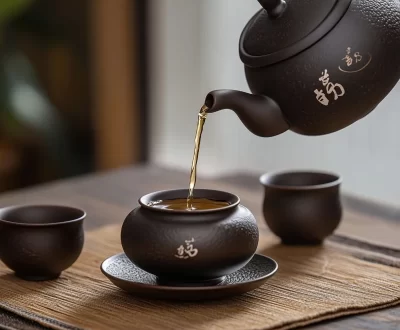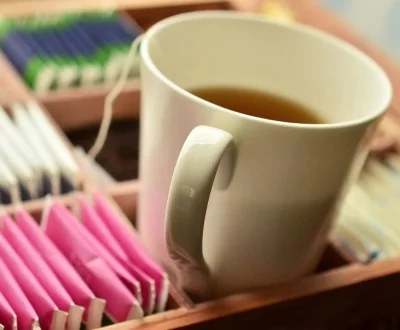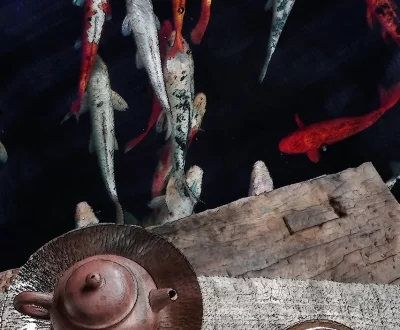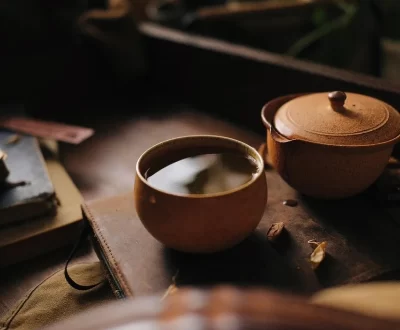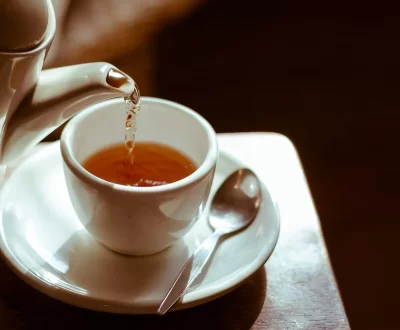Most Popular Tea Legends and Stories from Around the World
- September 3, 2025
- Uncategorized
 Tea is one of the most ancient and favorite drinks in the world. It has been enjoyed for millennia, not just because of its taste, but for the peace and comfort it brings. Along this journey, countless tea legends and stories were born — tales that connect people, places, and traditions across centuries. From Chinese emperors to Japanese monks, from British duchesses to Russian families, every culture has its own legend of how tea became part of daily life. Let’s take a look at some of the most intriguing tea legends and stories from around the world.
Tea is one of the most ancient and favorite drinks in the world. It has been enjoyed for millennia, not just because of its taste, but for the peace and comfort it brings. Along this journey, countless tea legends and stories were born — tales that connect people, places, and traditions across centuries. From Chinese emperors to Japanese monks, from British duchesses to Russian families, every culture has its own legend of how tea became part of daily life. Let’s take a look at some of the most intriguing tea legends and stories from around the world.
The Chinese Legend of Emperor Shen Nong
The most popular tea legend begins in China, sometime in 2737 BCE. Emperor Shen Nong, or the “Divine Healer,” was boiling water in the open air one day. A few leaves of a nearby tea bush fell into his pot by mistake. Curious, he drank the concoction and was pleased to discover that it was thirst-quenching and stimulating. He believed it was also medicinal. This discovery by mistake is said to be the origins of the Chinese consumption of tea that later spread to the rest of the world.
Bodhidharma and the Origins of Tea in Zen Buddhism
In Japan and India, tea has a very spiritual past, deeply rooted in ancient tea legends and stories. One of the most famous tales credits the origin of tea to Bodhidharma, the Indian monk who founded Zen Buddhism. He would sit in meditation for hours on end but sometimes dozed off. Frustrated with himself, one day he cut off his eyelids and discarded them on the ground. From that spot, the first tea bush grew. The leaves of the plant were used to help monks stay awake and focused during meditation. This is why, even today, tea remains a symbol of wakefulness, discipline, and spiritual energy in Zen traditions — a timeless part of tea legends and stories across Asia.
Sen no Rikyū and the Japanese Tea Ceremony
Tea is not only a drink in Japan—it’s an art. The Japanese tea ceremony, also referred to as chanoyu, was inspired by a tea master named Sen no Rikyū in the 16th century. Before giving his first lesson in tea, he cleaned the whole garden but left one single flower in the alcove. This action turned out to be a lesson: beauty exists only through simplicity, respect, and harmony. Today, the Japanese tea ceremony still symbolizes peace, mindfulness, and the pleasure of small things.
Afternoon Tea in Britain
The British custom of afternoon tea has a very romantic history. During the 19th century, Anna, the Duchess of Bedford, was always famished between lunch and dinner. To cure this, she would ask for tea and refreshments in the afternoon. She soon began inviting her friends over as well. The tradition took off in a big way. Soon, afternoon tea-complete with sandwiches, cakes, and scones-became all the rage across England. Even today, it remains one of the world’s favorite tea traditions.
The Russian Samovar Folklore
Tea in Russia is inseparable from the samovar, a big decorated kettle upon which to prepare tea. It is said that there is a spirit within every samovar that brings warmth and hospitality into the home and reunites family members. Family members would circle around it during long, cold Russian winters, believing it to be something greater than a kettle—it was the center of the home.
The Last Sip
These stories unveil the much deeper meaning of tea. To one, it is a symbol of health and well-being; to another, spirituality, simplicity, or even family connection. The next time you brew yourself a cup of tea, remember this—you’re not just drinking something. You’re engaging in a practice that has millennia of background, culture, and meaning.
For more blogs like this click here . Thankyou.
More from our blog
See all postsRecent Posts
- Is tea good or bad for health? Let’s Talk Tea. September 3, 2025
- Beyond the Chai Wallah: Uncovering India’s Secret Tea Gardens September 3, 2025
- That Cup in Your Hand? It Has a Wild Story to Tell September 3, 2025


